Though we send brand invites for our annual Gear Test Week in February and have finalized submissions weeks before arriving at Powder Mountain, trends in a season’s lineup don’t become clear until well after the test. It’s only when us editors begin parsing through testers’ first impression scores, reading through forms and sifting through the compiled specs for every ski, boot and binding that a bigger picture emerges.
While years past have yielded a concentration of mid-range skis—the type that strive to be quiver killers—our latest test marked a shift toward ends of the spectrum. This doesn’t mean a loss of versatility but rather a slew of setups which cater to the preference of the person driving them. There are lightweight carvers which power through crud and playful, wide-yet-light chargeable skis; three-buckle, 130-flex, 2,500-gram boots and their freeride counterparts with a Boa, two buckles and a generous ROM; and 15-RV equivalent, 790-gram tech bindings and those whose tech toe can be replaced with a Look Pivot. The adventure is yours to choose. —Greta Close
Bindings
Dynafit Ridge Binding
dynafit.com | $600 | 820g | 4-12 RV
Brakes (mm): 75-94, 95-108, 109-125 | Crampons (mm): 80, 90, 100, 110, 120, 130 ($90)
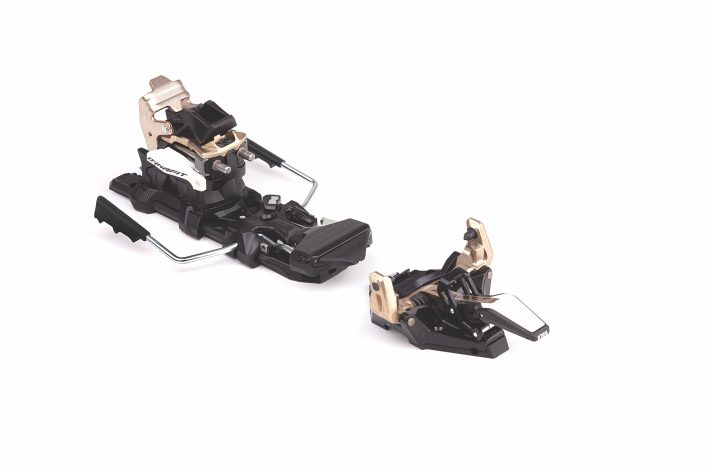
Meet the Ridge. Handmade in Europe from aluminum, stainless steel and a synthetic composite (plastic with additional strengthening ingredients) Dynafit’s new binding blends light weight with strength. “Cool to see new binding ideas,” said a tester with a flair for the handmade (though more for denim fanny packs than skis).
“Skiing performance was stellar,” said a Teton ripper who put these bindings to the test on sun affected crud. “I forgot I had a pin binding on my feet to drive the very burly Tigard ski.” Earning 5/7 for everything from power transfer and lateral control to stability and ski to snow feel, per testers, the Ridge impressed on the descent. Plus, with a RV-equivalent range of 4-12, these bindings can cater to a range of skiers.
Flip the heel unit around and you’re ready for the skintrack. Flat, 35- and 54-millimeter heel risers offer
a 5/7 tester-scored skinning stride across terrain. On the rear, “A turntable that is seemingly foolproof and easy for anyone to rotate will allow people that struggle with traditional heel pieces a great binding,” said a Montanan tester. Our Teton tester did find the latch which releases the rear tower “klunky.” But up front, he and the Montanan agreed on the toe piece’s ease of entry thanks to the wide toe plate and titanal boot stopper.
Tyrolia Almonte 12 PT
tyrolia.com | $575 | 650g | 5, 8, 12 RV
Brakes (mm): 90, 105, 120 | Crampons (mm): 90, 105, 120 ($125)
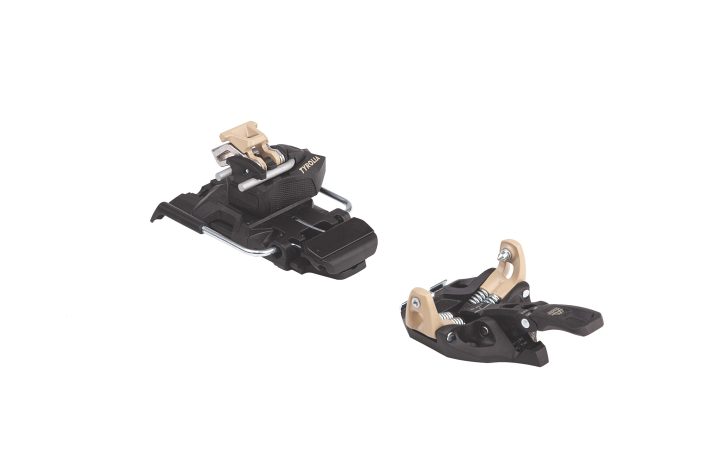
In 1928, Tyrolia made their first touring binding, the Almonte. While the original pair are a far cry from the latest rendition, it’s only fitting that the new Almonte 12 PT airs nearly 100 years since the inception of its namesake. “This new product is perfect for long days adventuring in the mountains,” said a seasoned tester who was pleased with the light weight (thank you bio-based plastic and carbon fiber construction). “Intuitive and effective, light and exciting,” raved a third-year tester.
From first step in, the Almonte 12 PT impressed testers. “Easy to find the toe pins with a snowy boot,” said a Tahoean who appreciated the repositioned pins, which Tyrolia designed to be narrower to help guide boots in. “Walked nicely,” added a Wasatch crusher. “Really like the metal heel risers—the shape made them easy to snap with a pole!” When not on the flats, these risers can be set at 6.5 or 12 degrees.
Gushing reviews didn’t stop on the descent. “Great power transfer,” said a tester who used the adjustable heel piece (12-RV or 5-RV equivalent U-pins can be swapped with the factory 8-RV). Strong downhill performance also included stability and ski to snow feel which both scored 6/7. While the primary concern was the untested durability of the plastic/carbon design, “the new Tyrolia binding didn’t expose any flaws,” remarked a veteran tester.
Cast Freetour 2.0 Pivot 18
casttouring.com | $780 | 2,680g (Ski)/2,000g (Touring) 8-18 DIN
Brakes (mm): 95, 105, 115,130 | Dynafit crampon compatible
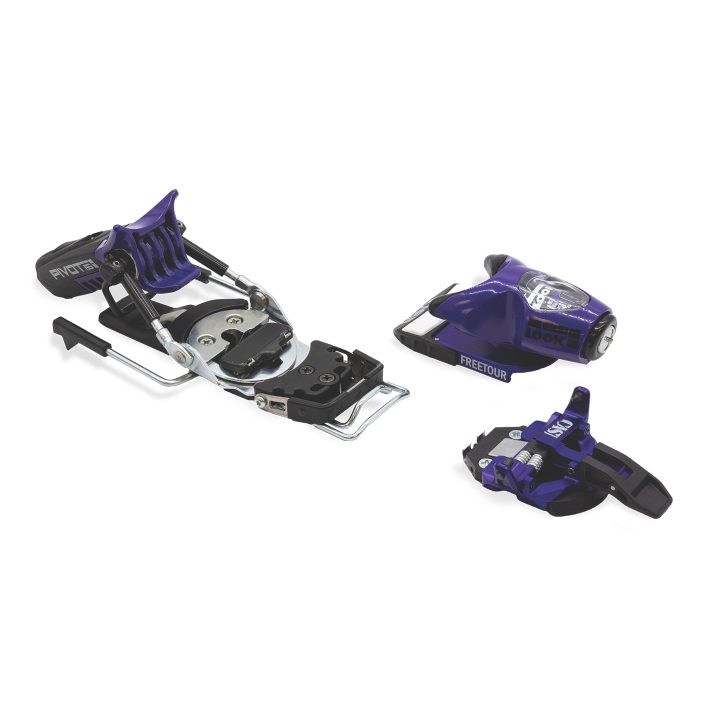
If you count tenths of grams or ski a two-buckle boot, read no further. But if you’re looking for a touring binding that doesn’t sacrifice ski performance, as one tester put it, “Who doesn’t want to ski on a Pivot? They are the best binding, best elasticity, great power transfer, good reliability.”
In simple terms, the Freetour 2.0 is a Look Pivot with a walk mode. An alpine toe is swapped with a tech toe via a 1-inch button. (Like hardboot splitboards, this is a touring-only toe.) A bar on the heel flips to lock out the brakes. According to a race dad, “When the toe is switched to the tech toe, the three positions of the heel riser make this a very effective and efficient uphill binding.” A competitive freeskier turned guide explained, “It’s not the lightest touring experience, but the toe piece is dependable. The lockout mechanism works really well.”
The new 2.0 carries upgraded AFD plates (compatible with ISO 9523, ISO 5355 and GripWalk 23223 boots) and a plastic mounting plate that replaced the four screw posts to hold the toe in place. Per a Teton tester, icing was minimal except on extremely wet spring days. After a full season, he concluded, “Huge improvement both for the use and mounting purposes. The downhill performance cannot improve much more.”
ATK Freeraider 15 EVO
atkbindings.com | | $760 | 790g | 7-15 RV
Brakes (mm): 86, 91, 97, 102, 108, 120 | Crampons (mm): 70, 75, 86, 91, 97, 102, 108, 120, 135 ($75-120)
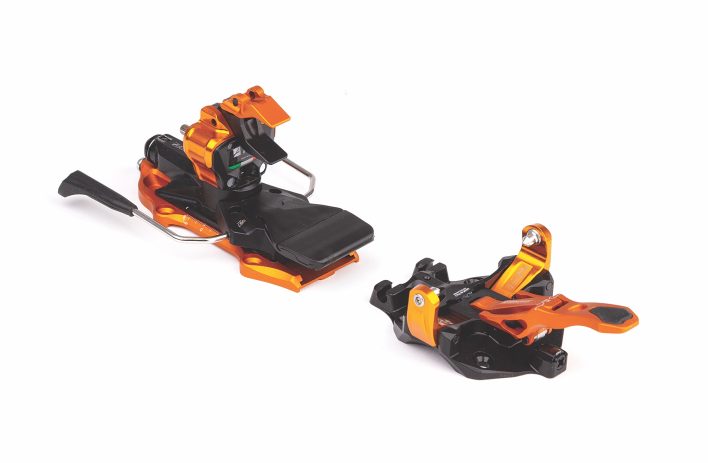
Italy exports Ferrari, Gucci and ATK. While two are for the upper echelon, the last one makes a binding that is “just all around incredible for its weight, great on the uphill, better on the down and intuitive to use,” according to a skid who prefers luxuries like Tacomas and craft beers.
The Raider Evo comes in a svelte aluminum and POM (stiff and stable) plastic package, and it’s packed with tech, like the adjustable release value in the toe piece. Matching the toe and heel release values allows the skier to make full use of the 14 millimeters of elastic travel, 25 degrees of rotation in the heel piece and a cam release system (the two pins in the heel are parallel instead of u-shaped, making stepping in and out easier). “They ski so well and natural, no issues at all with performance there,” said a tester.
An aluminum Power Plate replaces last year’s plastic model under the heel piece. Not only does this up durability, per ATK, it also increases power transfer, a category that testers awarded the Raider Evo 15 with a 6.5 out of 7. Ergonomics scored a 6, specifically for transitioning between walk and ski mode with a quick turn of the heel. The only gripe was about clicking into the toe: “If they were to implement a ‘bumper’ system there, they might have the perfect binding,” said our luxury loving skid.
Published here are 4 of 10 bindings we reviewed in our 2025 Gear Guide. To check out the comprehensive range of bindings we wrote about pick up a copy of the 2025 Gear Guide, available in print and PDF versions.
*Affiliate link disclaimer:
At Backcountry Magazine, we are committed to providing you with honest and informative gear coverage. To support our work and continue delivering quality content, we are including affiliate links in our reviews. Partnerships with retailers are separate from coverage, ensuring that our reviews remain unbiased. These links help us earn a small commission if you make a purchase through them, at no additional cost to you.


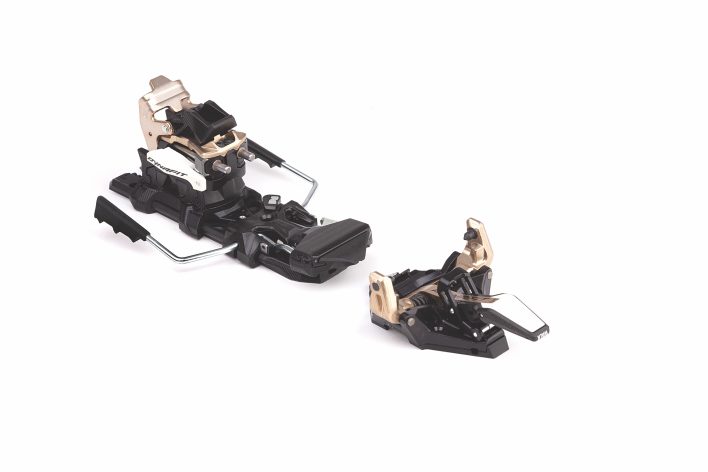
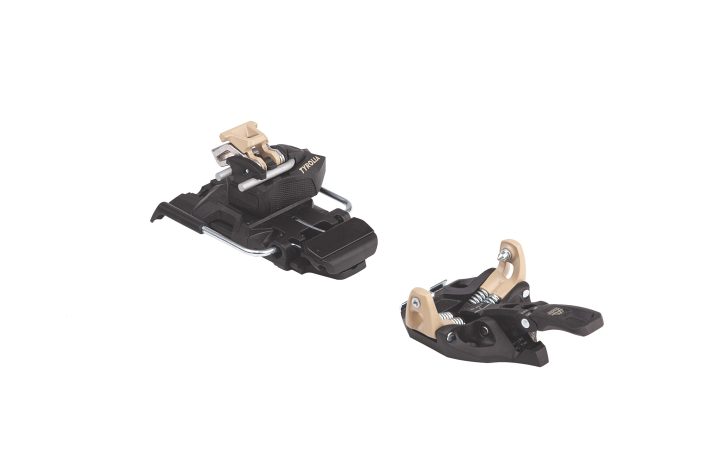
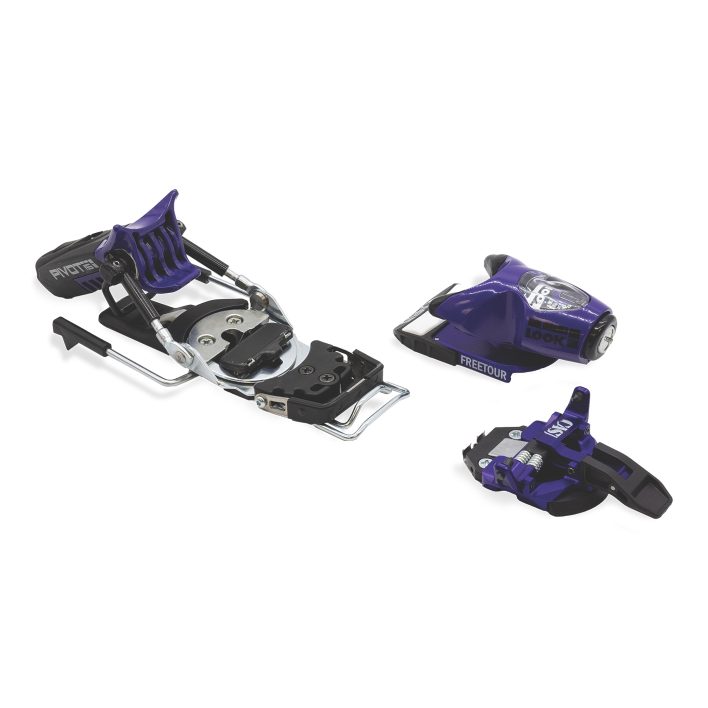
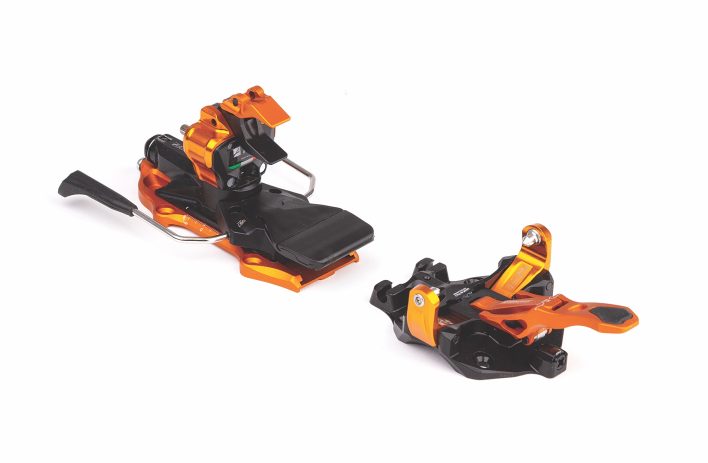









Related posts:
2017 Editors' Choice Awards: Splitboards
2020 EDITORS’ CHOICE AWARDS: SPLITBOARDS
2025 Editors' Choice Ski Reviews
Black Diamond Equipment Vision Down Parka